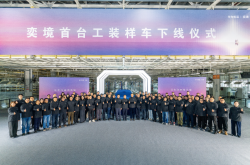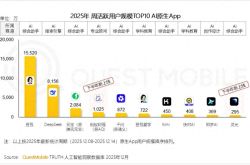Asian Auto Market | Japan June 2025: BYD Surpasses 500 Units in a Single Month
![]() 07/18 2025
07/18 2025
![]() 511
511

In the first six months of 2025, the Japanese automotive market continued its recovery trajectory, with total sales soaring 10.2% year-on-year.
Toyota maintains an unassailable lead, with its market share nearing 31%. Notably, Raize emerged as a significant disruptor, with June sales quadrupling year-on-year, closely challenging the long-reigning Yaris/Cross.
In the kei car segment, Honda N-BOX holds a firm grip, yet Daihatsu and Suzuki are closing the gap swiftly. Among foreign brands, Mini shone brightest. While local brands still dominate, underlying structural shifts are evident.
01 Toyota's Leadership and Raize's Disruption
In June 2025, Japan's new car market grew 5.2% year-on-year, selling 393,000 units, reinforcing the trend of steady recovery.
Toyota led the charge, securing the top spot with 119,000 units sold and a market share of 30.4%, nearly double that of second-placed Suzuki.
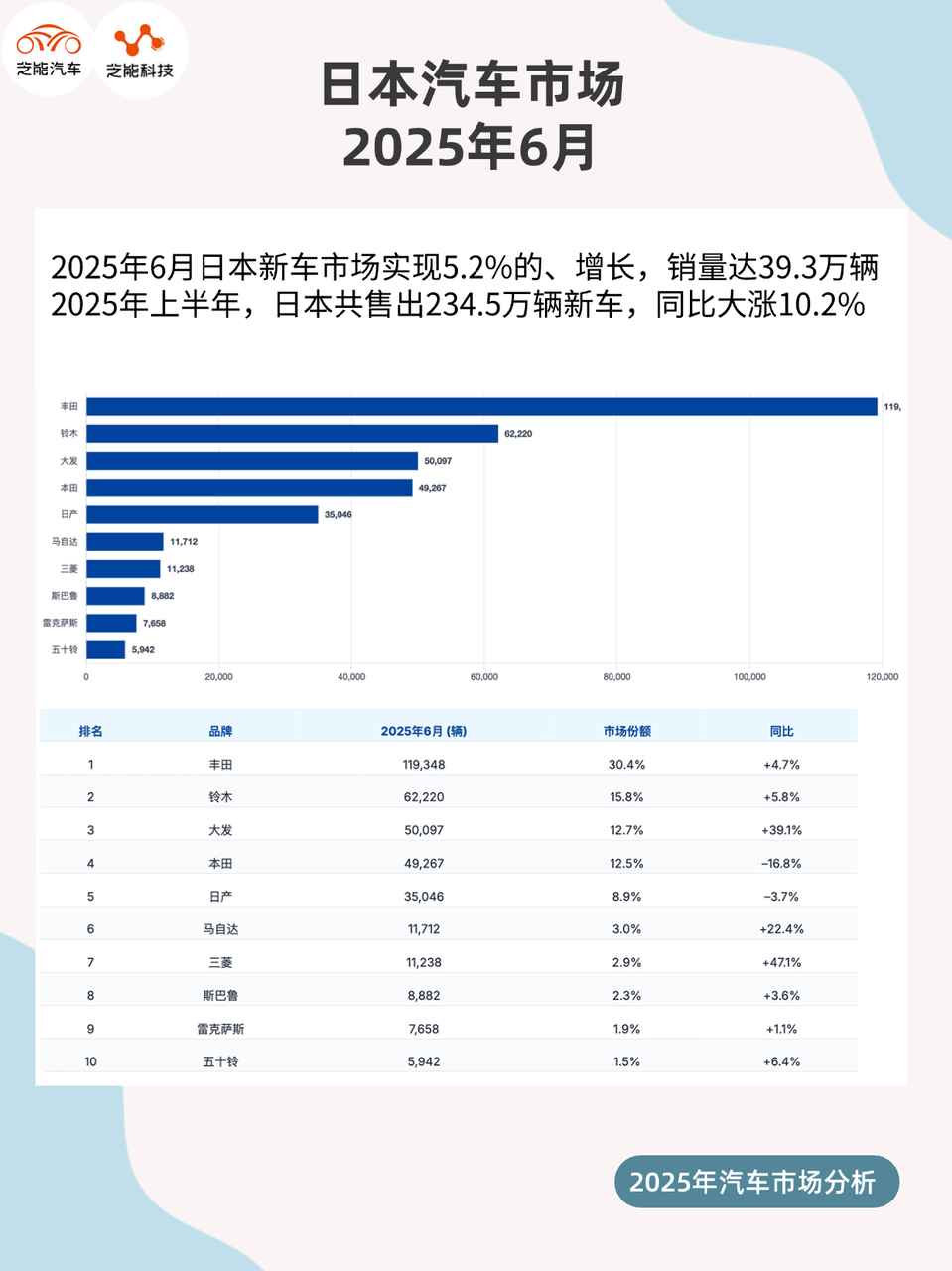
Raize's sales surged 390.6% in June, posing a direct threat to the long-time bestseller Yaris/Cross. This rise is strategic, leveraging Daihatsu Rocky's platform and catering to Japanese urban families' need for compact, practical, and affordable small SUVs.
Since the year's outset, Raize, with its refined design and configuration combinations, has garnered favor among young users and families. Trailing Yaris/Cross by just 727 units, Raize could overtake it in the second half.
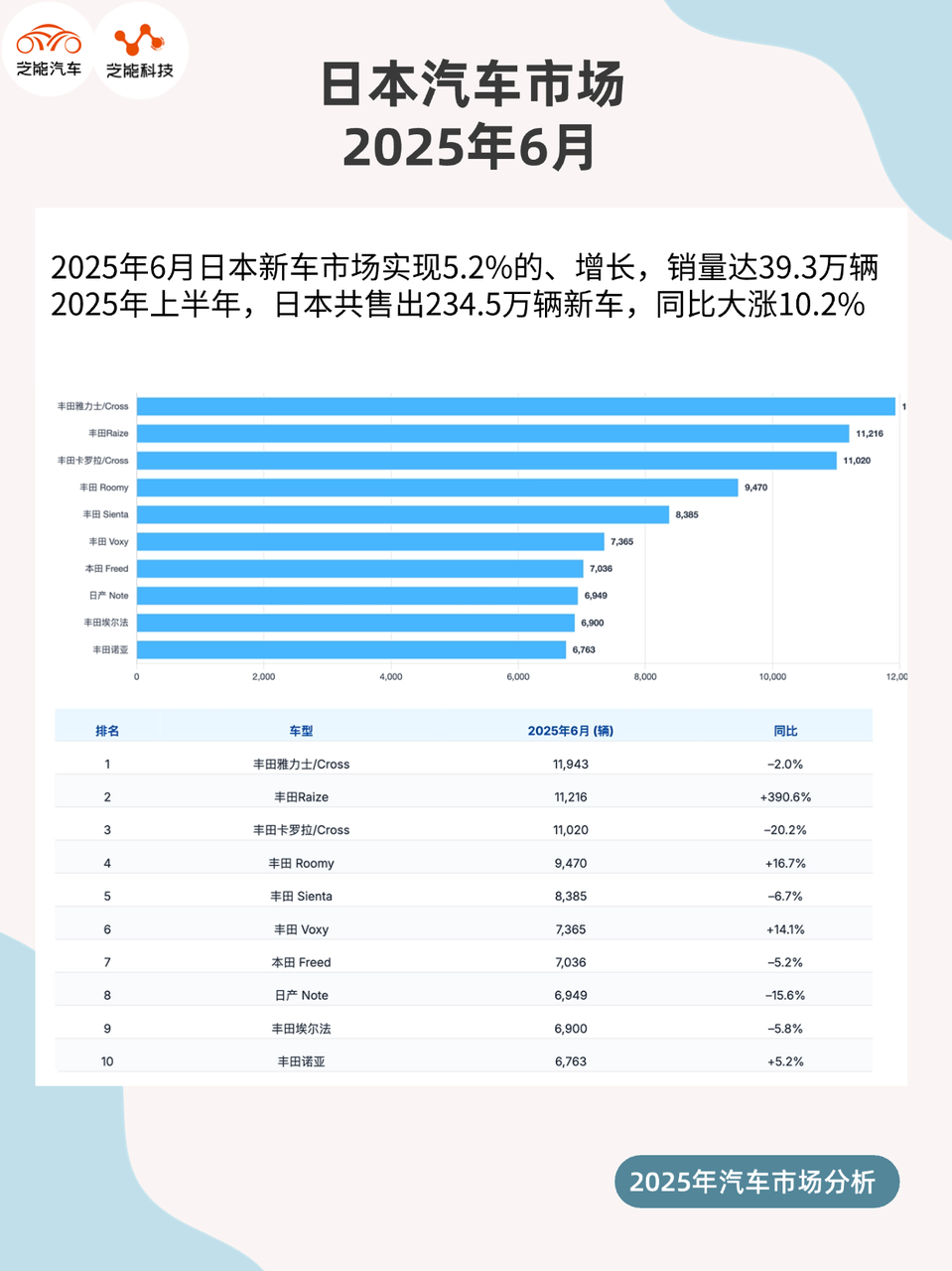
Yaris/Cross saw a slight 2% decline, while Corolla/Cross dropped 20.2% year-on-year. This underscores intensifying intra-brand competition and a crowded small car market. Without strategic adjustments, 'internal consumption' may arise.
In the top ten, Toyota dominates, with only Honda Freed and Nissan Note breaking the monopoly.
Versatile models like Roomy, Sienta, and Voxy remain popular, especially Roomy, up 16.7%, indicating strong demand for spatial flexibility.
Toyota's extensive product line spans from entry-level small cars to mid-size MPVs, forming a robust sales foundation.
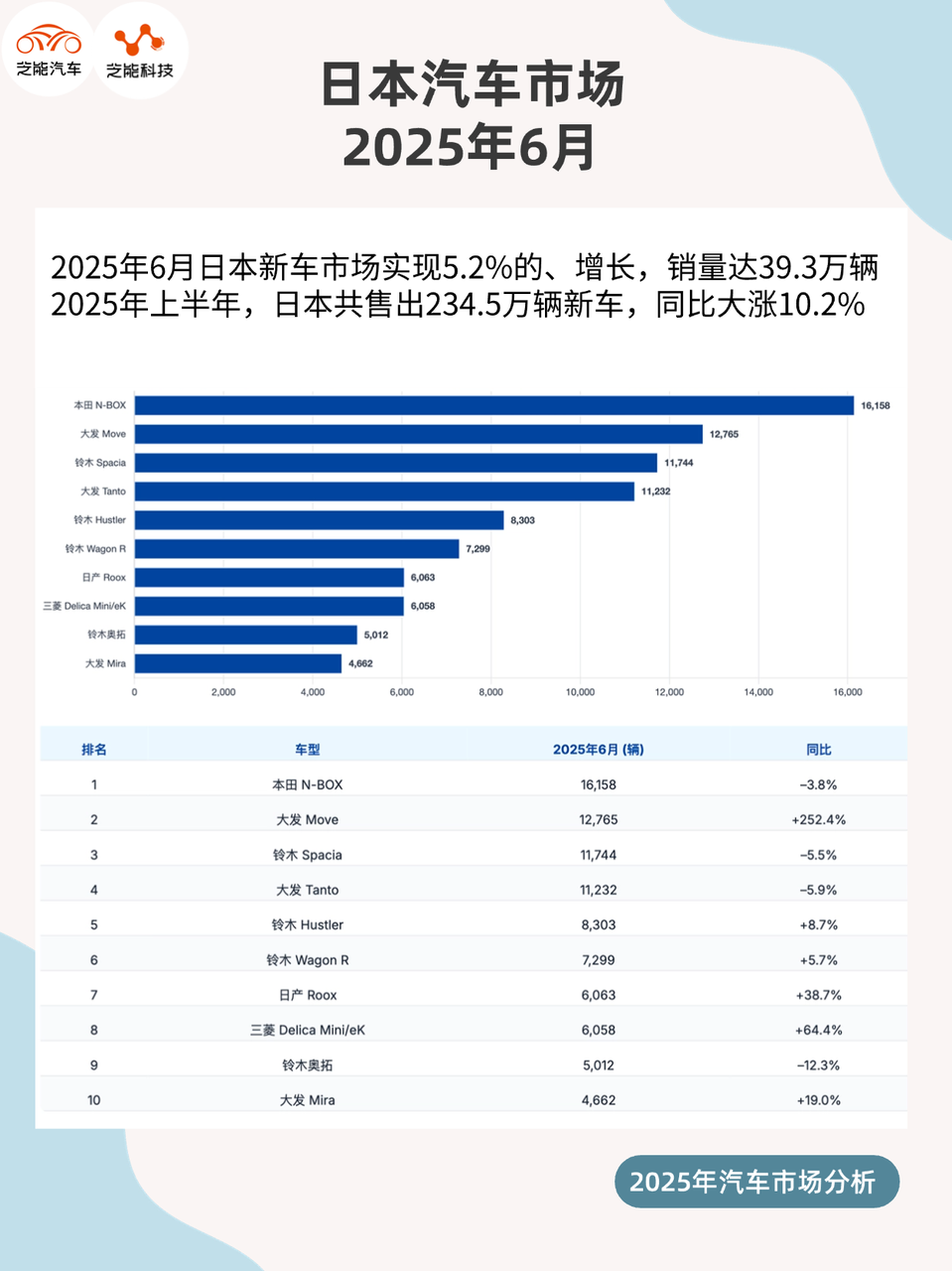
Besides Raize, Prius also surged, up 139.8% year-on-year, reclaiming mainstream attention. As a hybrid pioneer, Prius regained relevance through design innovation and energy efficiency improvements.
Suzuki Jimny and Subaru Forester grew 112% and 62.7%, respectively, highlighting the enduring appeal of off-road-style kei cars.
Honda N-BOX continues to lead the kei car market, despite a 3.8% June sales decline, maintaining a wide 16,000-unit lead over Daihatsu Move.
Move's sales soared 252.4% year-on-year, surpassing Suzuki Spacia and Daihatsu Tanto, showcasing Daihatsu's new generation's appeal. Suzuki Hustler and wagon models sustained market interest despite Spacia's slight decline.
Mini, among foreign brands, achieved explosive 220.7% growth, becoming the first to surpass 500 monthly units. While the base is small, this signals foreign brands' increasing presence in Japan's traditionally closed market.
Volkswagen, Land Rover, and Peugeot also grew significantly in June, with Volkswagen's Golf and T-Cross ranking top five in quarterly foreign model sales, indicating product update and marketing strategy improvements.
02 Honda and Nissan's Challenges, Daihatsu's Rise
In H1 2025, Japan sold 2.345 million new cars, up 10.2% year-on-year, fueled by last year's capacity recovery and consumer confidence boost.
● Toyota's cumulative growth was 13.8%, widening the gap with competitors.
● Suzuki, despite overall growth of just 0.5%, remained strong in kei cars.
● Honda faced difficulties, with sales down 6.5% and market share slipping from 16.1% to 13.6%, due to flagging mainstay model sales and misaligned new model introductions.
● Nissan's sales fell 10.3%, with Note as the sole bright spot. Kei cars Roox and Clipper performed well but couldn't reverse the decline. Nissan needs faster product updates and more compelling models.
● Daihatsu emerged as the second-tier winner, recovering from last year's quality scandal. Sales surged 117% year-on-year, overtaking Honda to rank third, thanks to Move and Tanto's rebound and consumer forgiveness.
● Mazda, Mitsubishi, and Subaru also grew, at 22.4%, 47.1%, and 14.2%, respectively, maintaining niche market competitiveness with distinctive product lines.
● In premium brands:
◎ Mercedes-Benz remains the largest foreign brand, ranking 11th despite a 2.6% decline.
◎ BMW grew 11.5%, and Volkswagen surged 30.8%, outpacing Audi.
◎ Mini's breakthrough suggests foreign brands can find success in personalized niche markets.
● BYD surpassed 500 units in a single month for the first time, selling 514 units, up 245%. This breakthrough in Japan's local-brand-dominated market indicates Japanese consumers' growing acceptance of electric vehicles.
With improving EV charging infrastructure, more Chinese brands may enter the market.
Summary
In H1 2025, Japan's auto market exhibited 'stability with changes.' Toyota leads, but internal competition intensifies. Honda and Nissan face pressure and need strategic product and brand rejuvenation. While foreign brands' market share is small, Mini and BYD's growth heralds new dynamics.





